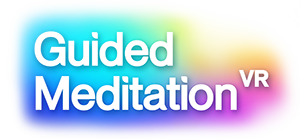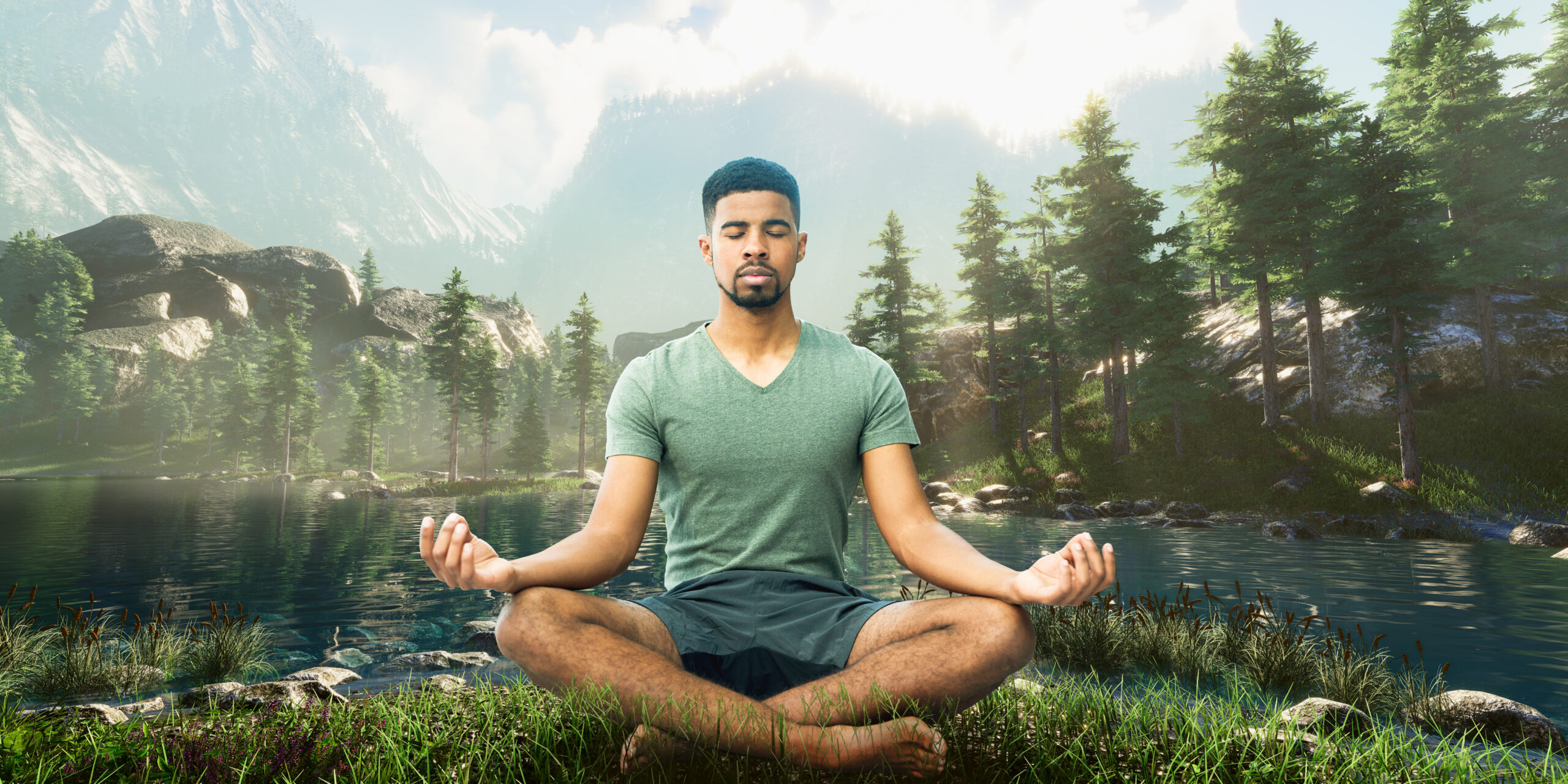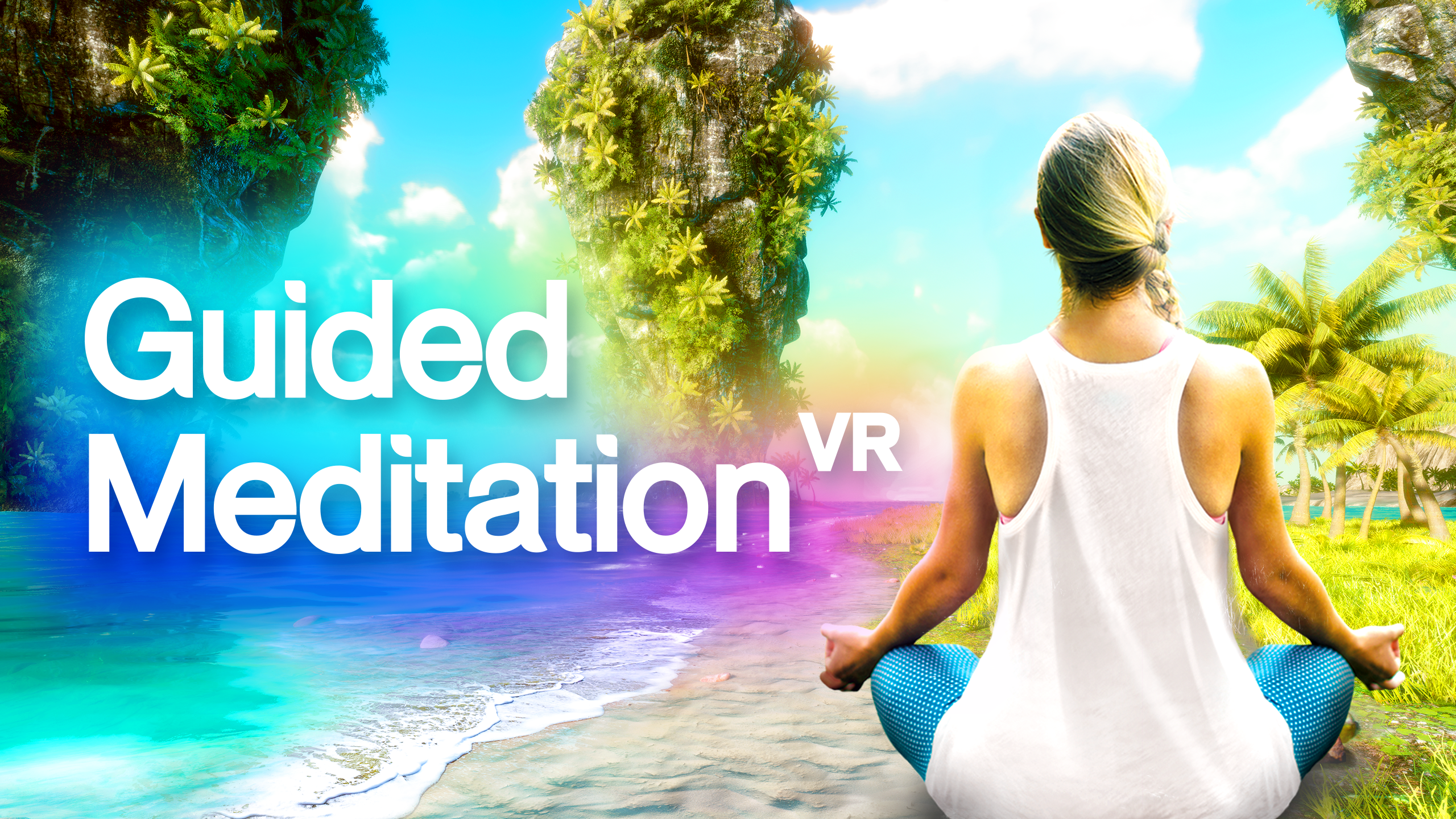- /
- Meditation
- /
- Anxiety
- /
- Anxiety Meditation 01
Session 1/10
Transcript
Hi, and welcome to this meditation for anxiety series.
This is a 10 part series in which you will learn to observe and manage anxiety and let go of fears and excessive worrying.
will begin with the breath and work our way through understanding anxiety and where it comes from. And importantly, how to learn to live in the moment and be free from anxiety.
First, ensure that you’re sitting or lying comfortably.
Allow your body to rest. Allow your body to feel heavy.
Your hands are resting in a comfortable position.
Your palms are open and facing up.
Allow your hands to rest easy, fully relaxed.
Now take a deep inhalation and breathe out slowly.
I want you to know that during this meditation, you will always be safe. But if for whatever reason you feel uneasy or you wish to come out of this meditation, you can do so at any time by just counting backwards from three down to one and taking a deep breath.
For now, just continue to breathe naturally.
As you breathe, you might become aware of things in your visual field or thoughts that arise.
Just allow that to happen. Become aware of them, and then gently bring your awareness back to the sound of my voice.
Let’s start with the breath.
The breath allows us to connect to the here and now.
It’s easily forgotten that we exist only in the present moment with no direct experience of the past or the future.
So take one more deep inhalation, filling your belly with the crystal clear air and then exhale slowly into all of the US Air has been expelled completely.
Flowing down allowing the exhalation to be longer than the inhalation calms down the nervous system and brings relaxation to the whole body.
Breathe in on a count of 3 – 1…2…3
then exhale and account for 1…2…3…4
Let’s repeat that.
Breathe in 1…2…3 Exhale 1…2…3…4.
inhale 1…2…3 exhale 1…2…3…4.
Inhale 1…2…3
exhale 1…2…3…4.
Just continue like that for a few moments, inhaling on a count of three
and exhaling on a count of four.
And now that you’re so beautifully relaxed, I want to talk a little bit about how the brain works.
There are two parts of the brain that are relevant to us when it comes to anxiety,
the neocortex or the intellectual mind, and the limbic system, the emotional mind.
The intellectual mind is conscious. That allows us to come up with new ideas and it uses reason to assess situations making it generally quite positive.
emotional mind operates mostly on an unconscious level.
It’s made up of the amygdala, which is responsible for the fight flight freeze response. It’s our lung system, the hippocampus which holds behavioral patterns and experiences and the hypothalamus, which regulates chemical responses in the body and the mind.
So let’s say you’re walking down the street and suddenly a tiger is in front of you what happens, the alarm system would go off and our emotional mind would take control. The hypothalamus will ensure a release of adrenaline and your hippocampus would make sure you take action based on previous experiences of danger.
Your fight flight freeze response would be activated and it will save your life.
In these circumstances, this response is totally appropriate. But this is how anxiety works. When we sense the threat. We lose intellectual control and our emotional brain takes over sending our mind and our body into survival mode.
Our motion mind is negative.
It always sees things from the worst possible perspective. It has to imagine you came across the tiger. And your brain would say, Oh, it’s fine. I’m sure it’s already eaten. That would be so dangerous. This is a good response when we run into tigers. But it’s unhelpful when our boss calls us in for a meeting, or we’ve had an argument with a loved one.
So how do we slip from the intellectual mind into the emotional mind? In today’s world, there are normally no tigers lurking behind buildings. But we create anxiety through our own thinking.
It’s not the events in our life that necessarily cause anxiety, because otherwise, everyone who has to give a presentation at work would have a panic attack. So it must be the thought patterns that cause anxiety.
Over the next 10 sessions, we will continue to learn how anxiety is created in our own minds. And what we can do about it, you will regain control and how do you start to regain control. It’s all in the breath.
A breath is what connects the conscious and the unconscious mind.
So learning to control your breathing will help you to control what is happening below the conscious level.
So let’s take a deep inhalation and exhale completely.
Tension is often held in the body. So bring your awareness to the body by becoming aware of your body parts and allowing them to relax your entire being come relax.
And start by bringing our attention to the top of our head. And think about all those little muscles on the scalp. And just allow them to let go and relax that all the muscles of the face. Just let them go slack your forehead, your eyelids, the space between your eyebrows, the cheeks, mouth and jaw muscles.
It’s a wonderful feeling when you allow your face to relax because you can actually feel the skin settling and smoothing out and clenching your teeth and relaxing your tongue. Because the more you physically relax, the more you can mentally relax.
Moving your awareness to your neck and shoulder muscles. Now. I see all the tension drain away as you think on down through your arms and all the way down to the very tips of your fingers and tips of your thumbs.
Bring awareness to your chest and feel how it rises and falls with every deep slow breath you take.
You notice how you’re breathing even more smoothly, even more slowly as you relax more and more.
Let any tension simply drain away as you think on down to your stomach, your back, upper middle and lower back. Allowing the muscles along your spine to relax and let go.
We often hold tension in our hips. So bring your awareness to your hips and pelvic area.
Take a deep inhalation and gently move the clean fresh breath to your hips.
As you exhale deeply and completely, all the tension flows away.
Now moving your awareness all the way down through your thighs, knees, lower legs, and all the way down to your feet until you reach the tips of your toes.
Or the muscles of your body are so beautifully relaxed, so relaxed and easy.
When our body is relaxed, our mind is relaxed.
And I wonder if you can enjoy allowing this pleasant and comfortable experience of heaviness and the whole body to continue.
Starting now you will realize more and more that the way you feel is due to your own thoughts, the way you think about events, situations and people. Starting now you will be able to shift your thoughts shift the way you think about events, situations and people.
You will be calmer every day. As you take control of your thoughts, your feelings and your actions.
How do you start to regain control? Begin by taking control of your breathing.
So let’s take a last deep inhalation and exhale completely.
Continue to enjoy each breath and you will continue to reap the benefits of this meditation and the next minutes, hours and days.
And now I will count from three down to zero and when I’ve counted from three down to zero, we’ll come back to the room feeling relaxed, refreshed and easy.
3…2…1…0.
”Starting now you will realize more and more that the way you feel is due to your own thoughts, the way you think about events, situations and people.


